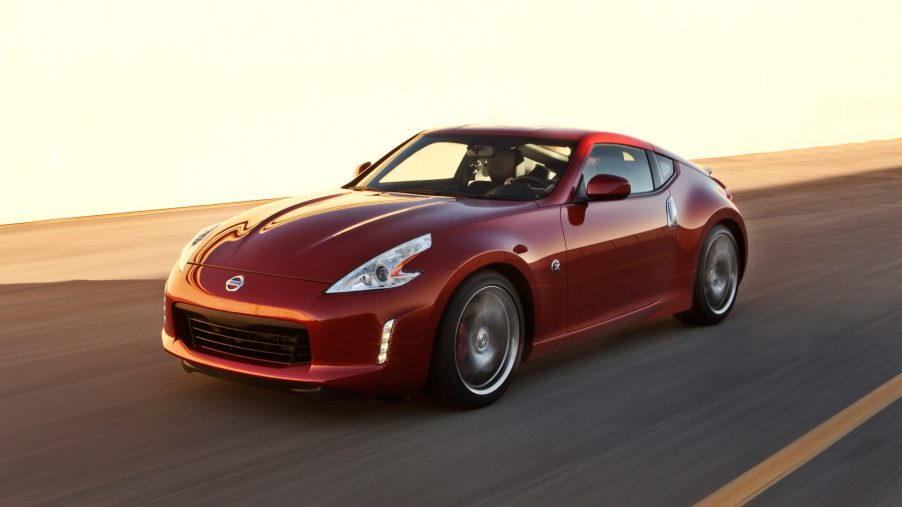
7 Most Common Nissan 370Z Problems After 100,000 Miles
The most common Nissan 370Z problems after 100,000 miles article highlights:
- High-mileage Nissan 370Zs can develop several engine-related problems, including excessive oil consumption and, on pre-2013 models, oil galley gasket failure
- Over time, the 370Z’s clutch master and concentric slave cylinders, exhaust, and catalytic converter might fail, as can pre-2013 models’ electronic steering locks
- Make sure your 370Z’s rear axle nut isn’t clicking, and if you want to drive on a racetrack, address potential fuel starvation problems
If you, like many enthusiasts, can’t wait any longer for the 2023 Nissan Z to show up, there is an alternative. Although heavily updated, the 2023 Z is still based somewhat on its predecessor, the Nissan 370Z. And even in today’s used car market, 370Zs remain budget-friendly sports cars. But before you start shopping, you should know about some of the problems 370Zs often face.
Like the 350Z, high-mileage Nissan 370Zs have oil consumption problems
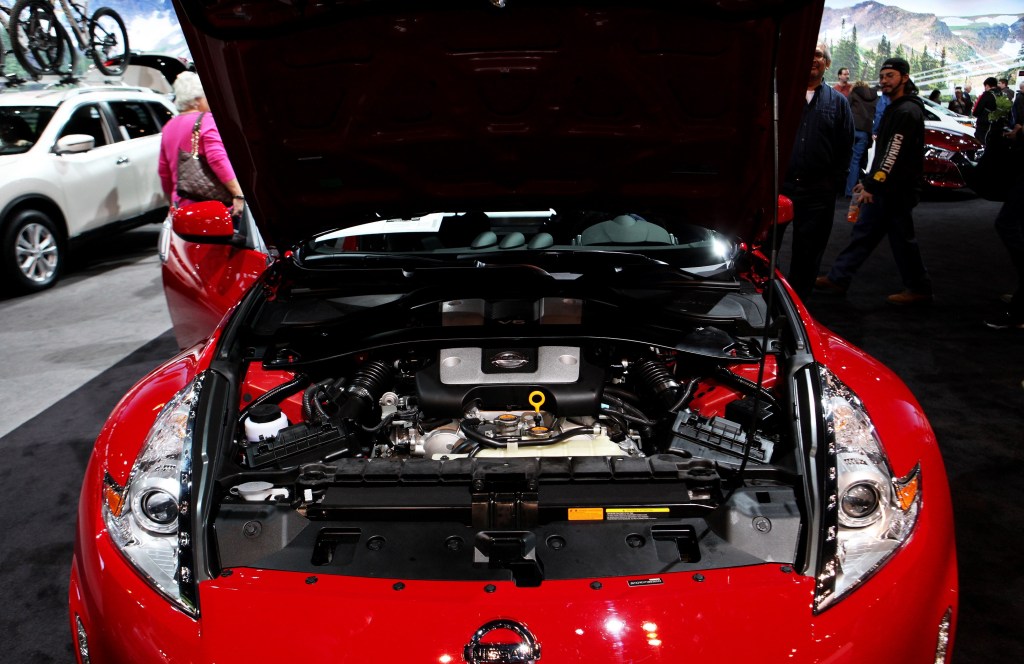
A major source of the Nissan 370Z’s curb appeal is its engine. The 3.7-liter VQ37VHR V6 makes 332 hp in base form and 350 hp in the Nismo model. But with a few mods, it can easily make more—and, crucially, survive. Hence why other cars with this engine, like the Infiniti G37, are popular with the tuner crowd. However, although the 370Z’s VQ37VHR has some critical updates over its predecessor’s VQ35DE, this V6 still has some problems.
One of those problems should be familiar to anyone who’s spent time with the 370Z’s predecessor, the 350Z. Namely, VQ engines tend to consume more and more oil as they gain miles, Tuning Pro says. Some oil consumption isn’t unusual with high-mileage engines, but not one quart every 1000-2000 miles like TP claims some 370Zs see.
The good news is this consumption doesn’t appear to cause any long-term issues if it’s monitored. So, just check your Nissan 370Z’s oil regularly and top up as needed, and you should be good. However, there are some additional things to keep in mind.
Firstly, a 370Z that’s low on oil can quickly develop timing chain problems. Without sufficient oil, the chain won’t be lubricated, and thus will start stretching and getting damaged. Secondly, high oil consumption accompanied by misfires, power loss, and white smoke from the exhaust isn’t normal. That could be a sign of low cylinder compression and imminent engine failure, TP explains. So, if the used 370Z you’re looking at has these symptoms, walk away.
Pre-2013 Nissan 370Zs can develop oil galley gasket problems
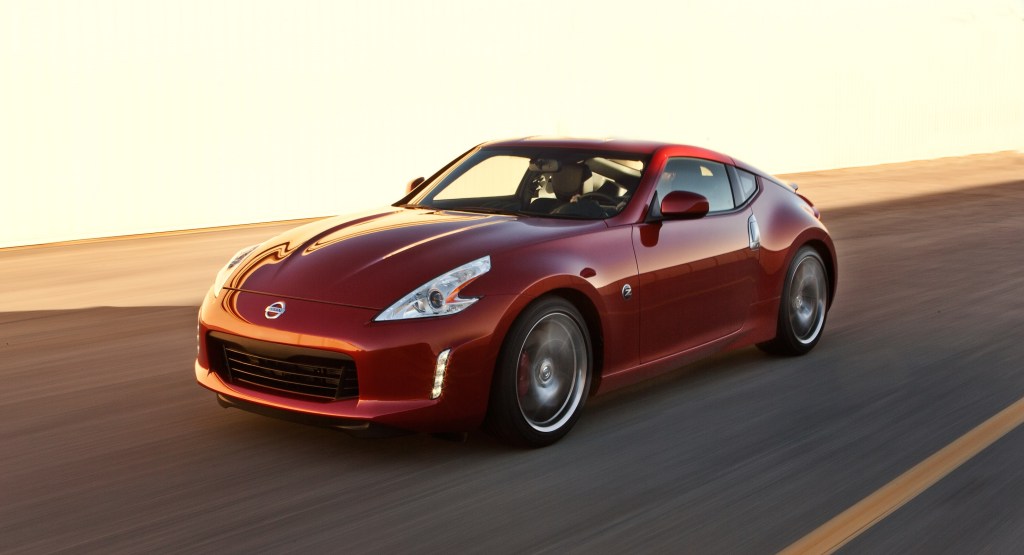
As noted earlier, the Nissan 370Z’s VQ37VHR improved on the 350Z’s VQ35DE V6 in several areas. For example, it doesn’t have the timing chain tensioner issues that often plague high-mileage 350Zs. However, though it eliminated some issues, the VQ37 also introduced one: the oil galley gasket.
Remember how the timing chain needs oil to stay lubricated? The oil galley is what lets oil flow to the chain. The VQ37 has two of them and they’re sealed by two gaskets. And their failure is practically guaranteed, TP says. To quote GarageDreams, “it’s not a matter of if, but when.”
Admittedly, gasket failure isn’t uncommon with older cars, especially ones with well over 100,000 miles. But the 370Z’s galley gasket problems don’t stem just from age, but poor design and materials, GarageDreams and TP explain. Furthermore, replacing these gaskets requires disassembling a significant portion of the engine. So, it’s not an easy or cheap task.
Fortunately, there are some ways you can avoid oil galley gasket failure. The first is buying a 2013-or-later 370Z. Nissan revised the gasket design sometime in 2012, but a specific date is difficult to pin down. So, while some 2012-MY 370Zs have the bad gaskets, no 2013-MY ones do.
But if you do have a pre-2013 370Z, you can avoid the oil galley gasket problems with stronger replacements. Unless you’re supremely confident in your DIY skills, installing them is best left to a trained mechanic, so it won’t be that cheap. And it’s best combined with another engine service, such as replacing the water pump. However, the parts themselves aren’t expensive; a steel gasket kit from Z1 Motorsports only costs $60.
As the miles pile on, your 370Z’s clutch master and slave cylinders might fail
One set of common high-mileage Nissan 370Z problems has nothing to do with the engine, though these issues originate nearby. I’m talking about how the 370Z’s clutch master cylinder (CMC) and concentric slave cylinder (CSC) tend to fail. CSC failure is so common that 370Z owners filed a class-action lawsuit against Nissan, which issued a technical service bulletin to address the issue.
When you press down on the clutch pedal, your car’s clutch fluid is pressurized and moves from the CMC to the slave cylinder. This is what lets you smoothly disengage and re-engage the clutch to change gears. And if the CSC fails, not only can you not change gears, but you might damage the clutch assembly, GarageDreams explains. Plus, you’ll start leaking clutch fluid. CMC failure isn’t good either, but you can temporarily work around it, GarageDreams notes.
Luckily, as with the oil galley gasket, these 370Z clutch cylinder problems have some solutions. For one, replacement OEM CMCs aren’t as failure-prone as the original ones. Meanwhile, shops like Z1 Motorsports offer stronger aftermarket CSCs. Or, with the right kit, you can replace the CSC altogether with a more robust external slave cylinder arrangement. Z1 Motorsports’ kit costs $500.
Before buying a used Nissan 370Z, make sure it doesn’t have steering lock problems
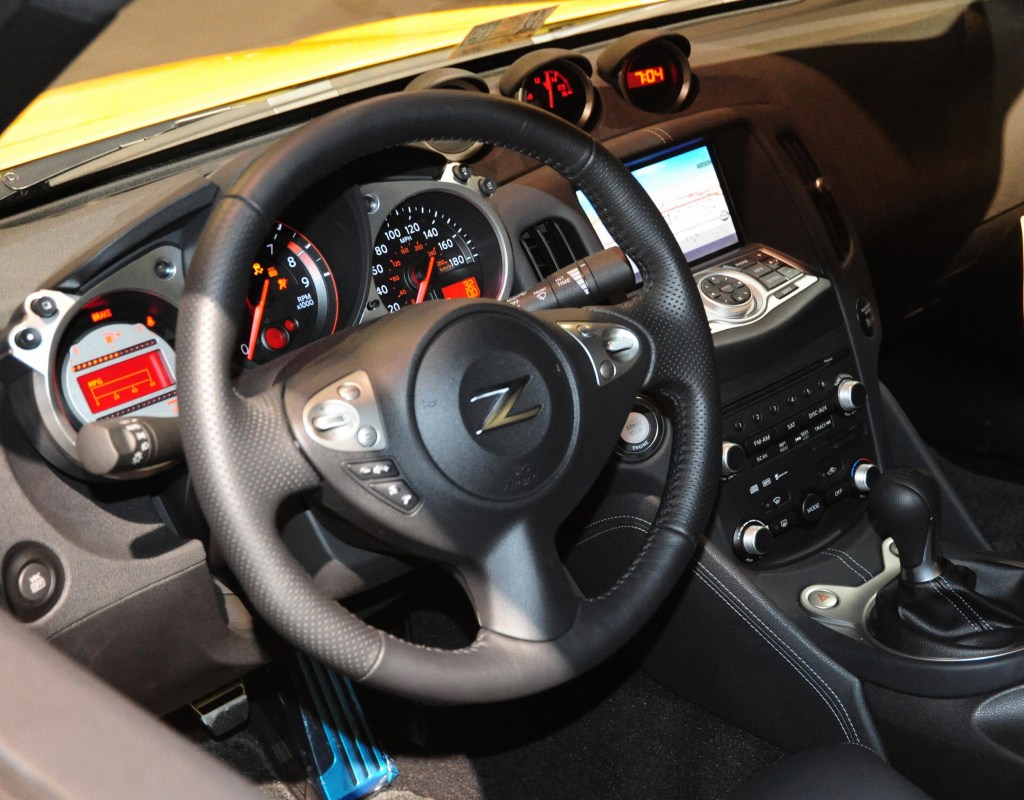
One Nissan 370Z problem isn’t unique to the sports car, but also affects other contemporary Nissans, including the Altima. Both the 370Z and the Altima have electronic steering column locks and they’re known to fail. If they do, your car won’t just have a frozen steering wheel—it won’t turn on. And fixing the problem at a Nissan dealership is expensive, GarageDreams says.
If your Nissan 370Z’s steering lock does fail, you can temporarily fix it by whacking the steering column a few times. No, I’m not making this up. Supposedly, hitting the steering column while simultaneously putting the ignition into ACC Mode can disable the lock. But if you want a long-term solution, you can either pull the steering lock fuse or install an aftermarket lock.
Alternatively, get a 2013-or-later 370Z. Nissan removed the faulty part completely for the 2013 370Z, GarageDreams reports. No electronic lock, no chance of failure. Also, Nissan a recall for 2009-2010 370Zs to replace the steering lock assembly. So, if you’re buying one of those cars, check if the recall work was completed.
High-mileage Nissan 370Zs can suffer from several exhaust problems
Steering lock problems aren’t the only issues the Nissan 370Z shares with the Altima. Both cars’ catalytic converters often fail over time. In the 370Z’s case, it’s typically because of high engine temperatures, which usually points to a cooling system fault, TP explains. So, if your 370Z needs a new cat, you might want to check your radiator and head gasket. Also, consider installing an oil cooler; 2012-and-later 370Zs have them from the factory, GarageDreams notes.
There is another exhaust problem that’s 370Z-specific, though, and that’s a general failure. The standard 370Z exhaust “is a known failure point,” GarageDreams reports, usually due to rust. If you were planning on installing an aftermarket exhaust, this is arguably good news. But it’s still a problem worth keeping in mind if you’re watching your repair budget.
Fuel starvation is a known Nissan 370Z issue, but there is a fix
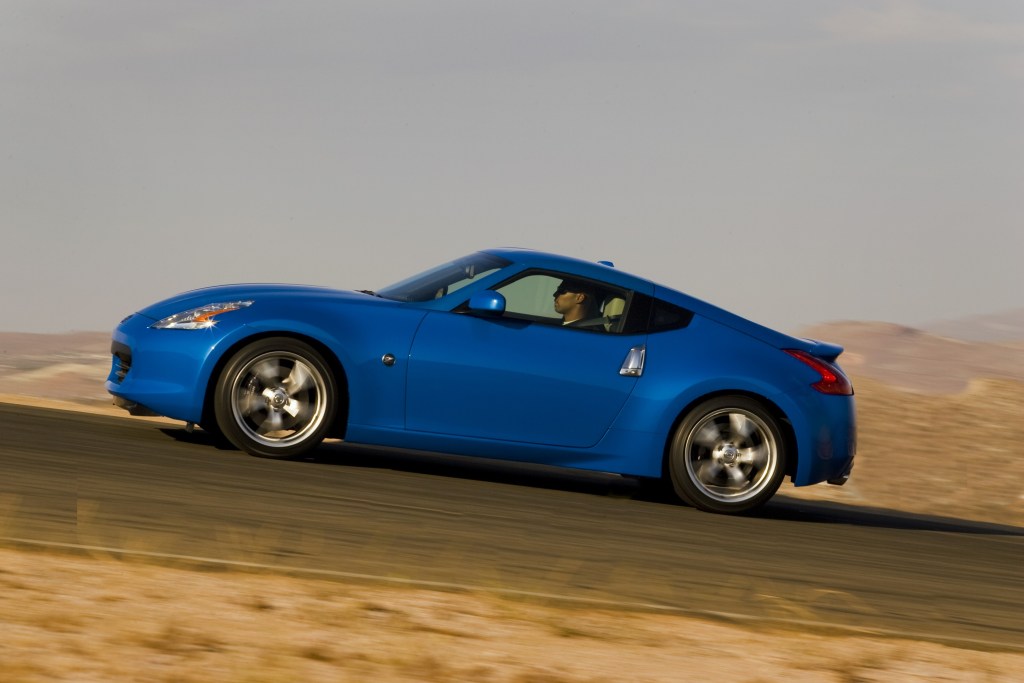
If your car starts stalling and sputtering, you might suspect that you’re out of gas. But that’s not necessarily the case with a 370Z. Yes, low fuel levels can cause fuel starvation, 1A Auto notes. However, some owners, especially those who track and/or drive their cars ‘with spirit,’ experienced fuel starvation even with near-full tanks. And that can wreak havoc on your fuel pump.
Some point to the 370Z’s saddle-bag gas tank as the source of the fuel starvation problems. Theoretically, in long turns, the fuel sloshes to one side, the pump sucks in air, and the engine starts sputtering. And if your fuel pump is getting on in years, excessive starvation can break it.
Now, if you don’t track your 370Z, you might not experience fuel starvation problems. But if you want to eliminate this potential headache, fixes are available. One option is a secondary fuel pump kit, such as Z1 Motorsports’ $550 kit. Alternatively, you can put a surge tank with extra pumps in your Z. This is trickier to install, especially if you mount the surge tank inside the OEM tank, as Radium Engineering does. Also, it’s more expensive: Radium’s kit costs $750.
Still, know that fuel starvation doesn’t have to be a problem with your high-mileage Z.
After 100,000 miles, you might notice your 370Z’s rear axle is clicking
Rounding out the list of common Nissan 370Z problems is a clicking noise coming from the rear axle. You’ll usually hear it when turning, 1A Auto reports.
The issue here is the 370Z’s rear axle nut tends to stretch away from its retainer over time. This lets the rear axle wobble slightly as you turn, causing it to knock against the nut and make that clicking sound. And if you let the clicking go on for too long, your 370Z’s rear axle will start slipping from its hub. At that point, annoying clicking becomes the least of your worries.
The simple solution is replacing the old nut and its associated washers and cotter pins with new OEM ones and some extra grease. However, the new nut will eventually stretch and click, too. A more permanent solution, 1A Auto says, is swapping out the Nissan part for a Kawasaki castellated (slotted) nut, part # 92210-0280. It’s the same size as the OEM nut and has similar torque specs but won’t loosen up like the Nissan part.
Are any of these 370Z problems deal-breakers?
If reading this list of problems makes you think the Nissan 370Z will be an unreliable car, know that’s not quite the case. If it’s maintained properly, the 370Z is an excellent, reliable, affordable used sports car. But picking the right one requires keeping this list of problem spots in mind. Hence why a pre-purchase inspection is always a good idea during car shopping.
In terms of severity, you should watch out the most for the clutch cylinder, oil galley, steering lock, and oil consumption issues. But you can avoid some of them by buying a 2013-or-later 370Z. These models are more expensive, but the peace of mind their redesigned components bring is arguably worth it.
Follow more updates from MotorBiscuit on our Facebook page.


